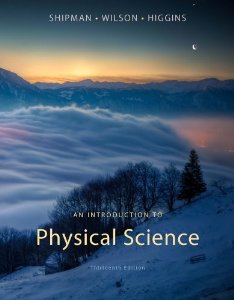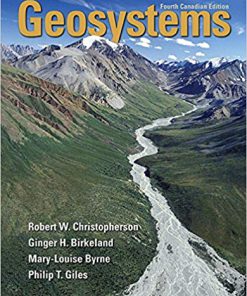Test Bank for An Introduction to Physical Science, 13th Edition : Shipman
$35.00 Original price was: $35.00.$26.50Current price is: $26.50.
Test Bank for An Introduction to Physical Science, 13th Edition : Shipman
Instant download Test Bank for An Introduction to Physical Science, 13th Edition: Shipman pdf docx epub after payment.

Product details:
- ISBN-10 : 1133109098
- ISBN-13 : 978-1133109099
- Author: James Shipman; Jerry D Wilson; Aaron Todd
Consistent with previous editions of An Introduction to Physical Science, the goal of the new Thirteenth edition is to stimulate students’ interest in and gain knowledge of the physical sciences. Presenting content in such a way that students develop the critical reasoning and problem-solving skills that are needed in an ever-changing technological world, the authors emphasize fundamental concepts as they progress through the five divisions of physical sciences: physics, chemistry, astronomy, meteorology, and geology. Ideal for a non-science majors course, topics are treated both descriptively and quantitatively, providing instructors the flexibility to emphasize an approach that works best for their students.
Table of contents:
1. MEASUREMENT. The Physical Sciences. Scientific Investigation. The Senses. Standard Units and Systems of Units. More on the Metric System. Derived Units and Conversion Factors. Significant Figures.
2. MOTION. Defining Motion. Speed and Velocity. Acceleration. Acceleration in Uniform Circular Motion. Projectile Motion.
3. FORCE AND MOTION. Force and Net Force. Newton’s First Law of Motion. Newton’s Second Law of Motion. Newton’s Third Law of Motion. Newton’s Law of Gravitation. Archimedes’ Principle and Buoyancy. Momentum.
4. WORK AND ENERGY. Work. Kinetic Energy and Potential Energy. Conservation of Energy. Power. Forms of Energy and Consumption. Alternative and Renewable Energy Sources.
5. TEMPERATURE AND HEAT. Temperature. Heat. Specific Heat and Latent Heat. Heat Transfer. Phases of Matter. The Kinetic Theory of Gases. Thermodynamics.
6. WAVES AND SOUND. Waves and Energy Propagation. Wave Properties. Light Waves. Sound Waves. The Doppler Effect. Standing Waves and Resonance.
7. OPTICS AND WAVE EFFECTS. Reflection. Refraction and Dispersion. Spherical Mirrors. Lenses. Polarization. Diffraction and Interference.
8. ELECTRICITY AND MAGNETISM. Electric Charge, Electric Force, and Electric Field. Current, Voltage, and Electrical Power. Simple Electric Circuits and Electrical Safety. Magnetism. Electromagnetism.
9. ATOMIC PHYSICS. Early Concepts of the Atom. The Dual Nature of Light. Bohr Theory of the Hydrogen Atom. Microwave Ovens, X-Rays, and Lasers. Heisenberg’s Uncertainty Principle. Matter Waves. The Electron Cloud Model of the Atom.
10. NUCLEAR PHYSICS. Symbols of the Elements. The Atomic Nucleus. Radioactivity and Half-Life. Nuclear Reactions. Nuclear Fission. Nuclear Fusion. Effects of Radiation. Elementary Particles.
11. THE CHEMICAL ELEMENTS. Classification of Matter. Discovery of the Elements. Occurrence of the Elements. The Periodic Table. Naming Compounds. Groups of Elements.
12. CHEMICAL BONDING. Law of Conservation of Mass. Law of Definite Proportions. Dalton’s Atomic Theory. Ionic Bonding. Covalent Bonding. Hydrogen Bonding.
13. CHEMICAL REACTIONS. Balancing Chemical Equations. Energy and Rate of Reaction. Acids and Bases. Single-Replacement Reactions. Avogadro’s Number.
14. ORGANIC CHEMISTRY. Bonding in Organic Compounds. Aromatic Hydrocarbons. Aliphatic Hydrocarbons. Derivatives of Hydrocarbons. Synthetic Polymers. Biochemistry.
15. PLACE AND TIME. Cartesian Coordinates. Latitude and Longitude. Time. Determining Latitude and Longitude. The Seasons and the Calendar. Precession of the Earth’s Axis.
16. THE SOLAR SYSTEM. The Solar System and Planetary Motion. Major Planet Classifications and Orbits. The Planet Earth–Third Planet from the Sun. The Terrestrial Planets. The Jovian Planets. The Dwarf Planets. The Origin of the Solar System. Other Planetary Systems.
17. MOONS AND SMALLER SOLAR SYSTEM BODIES. Features of the Earth’s Moon. Lunar Motion Effects: Phases, Eclipses, and Tides. Moons of the Terrestrial Planets. Moons of the Jovian Planets. Moons of the Dwarf Planets. Small Solar System Bodies: Asteroids, Meteoroids, Comets, and Interplanetary Dust.
18. THE UNIVERSE. The Celestial Sphere. The Sun: Our Closest Star. Classifying Stars. The Life Cycle of Low-Mass Stars. The Life Cycle of High-Mass Stars. Galaxies. Cosmology.
19. THE ATMOSPHERE. Composition and Structure. Atmospheric Energy Content. Atmospheric Measurements and Observations. Air Motion. Clouds.
20. ATMOSPHERIC EFFECTS. Condensation and Precipitation. Air Masses. Storms. Atmospheric Pollution. Climate and Pollution. Conceptual Question and Answer: Ruminating up Some CH4.
21. STRUCTURAL GEOLOGY AND PLATE TECTONICS. The Earth’s Interior Structure. Continental Drift and Seafloor Spreading. Plate Tectonics. Plate Motion and Volcanoes. Earthquakes. Crustal Deformation and Mountain Building.
22. MINERALS, ROCKS, AND VOLCANOES. Minerals. Rocks. Igneous Rocks. Igneous Activity and Volcanoes. Sedimentary Rocks. Metamorphic Rocks.
23. SURFACE PROCESSES. Weathering. Erosion. Groundwater. Shoreline and Seafloor Topography.
24. GEOLOGIC TIME. Fossils. Relative Geologic Time. Radiometric Dating. The Age of the Earth. The Geologic Time Scale.
People also search:
An Introduction to Physical Science
An Introduction to Physical Science Shipman
An Introduction to Physical Science Shipman 13th
An Introduction to Physical Science Shipman 13th Test Bank
Test Bank for An Introduction to Physical Science, 13th Edition : Shipman Download
You may also like…
Solution Manual
Test Bank
Forensic Science An Introduction to Scientific and Investigative Techniques 4th James Test Bank












